
views
- Get rid of nausea quickly by laying down in a comfortable, quiet place with your upper body propped up. Take deep breaths in and out through your nose.
- Try wearing an acupressure wristband to reduce nausea. Do simple stretches or try gentle yoga, like waterfall pose.
- Sip small amounts of water and clear broth to stay hydrated and eat small bites of bland food like bananas, rice, applesauce, or toast.
Quick Fixes
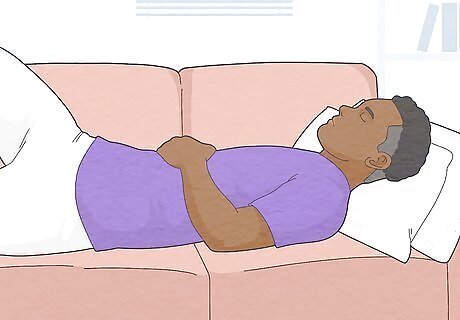
Sit still in a quiet space. Nausea can be triggered or worsened by moving around. Try resting while sitting in a quiet space or room on a bed or a mat. If you still feel nauseous, gently ease yourself down to a lying position and prop your upper body up on a pillow. If you can relax well enough, a quick nap can also get rid of your nausea. You might feel better by the time you wake up. Wear loose, comfortable clothing that doesn’t put pressure on your waist or stomach.
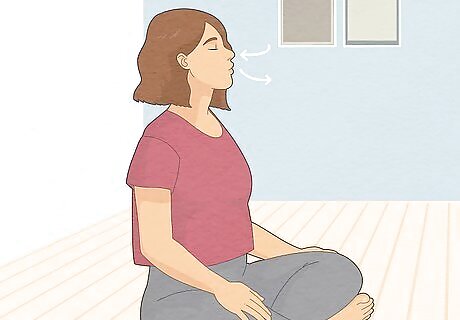
Breathe deeply. A breath of fresh air can clear your lungs, reduce anxiety, and make your stomach feel a bit better. Go outside if you feel up to it. Try controlled breathing: inhale slowly and exhale slowly, then repeat. Sit in a quiet space and close your eyes. Try to think about something other than feeling sick. Excessive screen time can cause headaches, so try to rest without watching TV or using your phone or tablet.
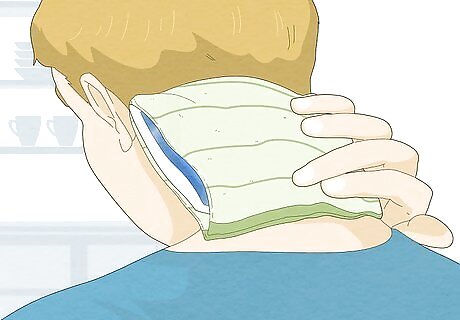
Place a cold compress on the back of your neck. Grab an ice pack and wrap it in a towel or thin cloth to protect your skin. Lay it on the back of your neck at the top of your spine to reduce your feelings of nausea. Alternatively, take a clean washcloth and dip it in cold water. Press the compress under your neck if lying on your back. If you are sitting upright, wear it around the back of your neck.
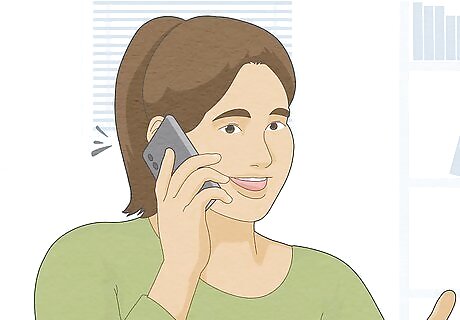
Take your mind off the nausea. Watch a movie, call up a friend, or do any other mild, light activity that prevents you from fixating on your nausea. Some nausea can be triggered or worsened by anxiety. Getting your mind off any other worries you may have can help nausea go away. Avoid activities that require intense focus. For instance, reading or writing that requires your eyes to focus on a block of text for a lengthy amount of time can cause eye strain. Under normal conditions, this strain may not affect you, but while you feel nauseous, any extra strain or stress can worsen your symptoms. Hold off on any high-intensity physical activities. While gentle movement can help your nausea, odds are, most physical activity will cause undue stress to your stomach, which can worsen your nausea.
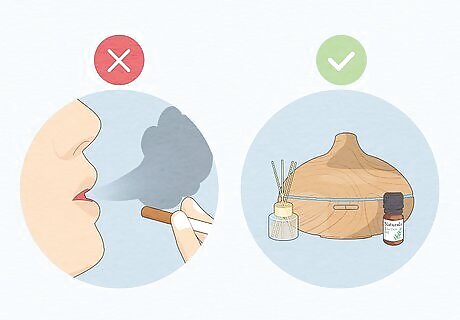
Avoid strong odors. Your sense of smell is connected to your digestive system, so a strong scent can send your stomach reeling and worsen your nausea. Try to avoid areas with strong scents like smoke, food, or perfume. On the other hand, try aromatherapy to help combat your nausea. Try soothing scents like chamomile, ginger, orange, lemon, or peppermint.
Acupressure and Yoga
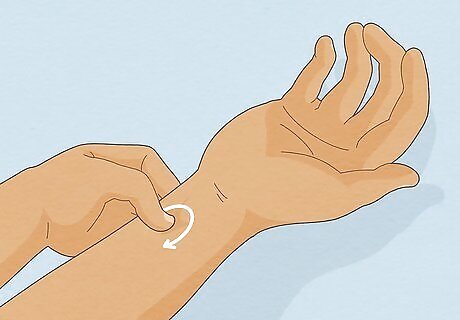
Apply acupressure with your fingers. Use your thumb or finger to press firmly down on the groove between the two large tendons on the inside of your wrist that start at the base of your palm (pressure point P6). Move your thumb or finger in a circle, applying pressure for up to 3 minutes. Acupressure is an ancient Chinese method that involves placing pressure on an area of your body, using your fingers. Acupressure, like acupuncture, works by changing the pain messages that nerves send to your brain and can relieve nausea.
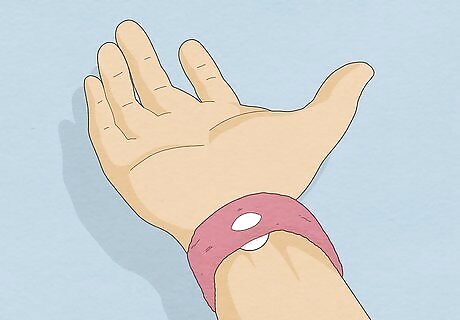
Use an acupressure wristband as an alternative. If you need to have your hands free, you can still try acupressure by using an acupressure or motion sickness bracelet. These bands have a button that applies pressure to points on your wrist continually, providing you with relief throughout the day.
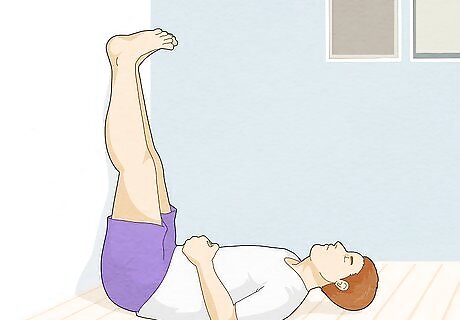
Try yoga. Gentle stretches may relieve your nausea. To stretch your upper back, do a downward-facing cross-legged pose. Sit cross-legged on the floor and bend your body forward. Stop bending forward when your body is at a 45-degree angle to your legs. Rest your arms on a chair in front of you. If you are more flexible, you can also bend your body until your forehead touches the ground in front of you and your hands are stretched outward. To stretch your neck, sit down in a chair. Relax your shoulders and place your hands on your thighs. Tilt your head toward one shoulder and hold for 15 to 30 seconds. Keep your opposite shoulder down. Take a deep breath and bring your head back to the center. Repeat 2 to 4 times on each side. Do waterfall pose. Lie on your back on a yoga mat or carpet near a wall. Place your tailbone and buttocks against the wall and rest your legs up against the wall. Remain in this position for at least 5 minutes, or 40-50 breaths. This pose should help to calm your nausea and reduce any stress or tension in your body.
Eating and Drinking
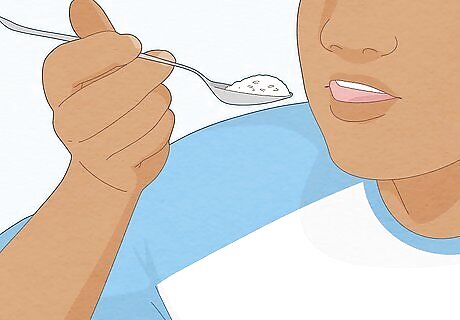
Eat food in small amounts throughout the day. When your stomach is upset due to nausea, eating small amounts of food and slowly drinking small amounts of fluids can avoid overwhelming your stomach. Make sure to eat and drink even when you feel nauseous. Hunger and dehydration can actually cause nausea or make your nausea worse.

Consume bland and hydrating foods. While eating might be the last thing you want to do, an empty stomach will only make your nausea worse. To avoid upsetting your stomach further, try eating easy-to-digest foods. Good examples of bland foods include bananas, rice, applesauce, and toast (the BRAT diet). Also, try crackers, potatoes, noodles, rice, and English muffins. If your nausea is only mild, you could also try baked or boiled chicken or fish. Good examples of hydrating foods include popsicles, clear broth-based soups, and Jello. Avoid foods that are greasy, salty, or spicy. For example, sausage, fast food, fried foods, and potato chips could make you feel worse if you suffer from nausea.
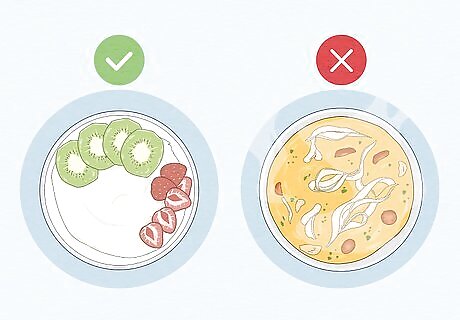
Try not to mix hot and cold foods. The difference in temperature can upset your stomach, which is the last thing you want while fighting off nausea. As a general guideline, cold food is usually gentler on the stomach and proves more effective at calming nausea than hot food. Hot food can have strong smells, which can make your nausea worse.
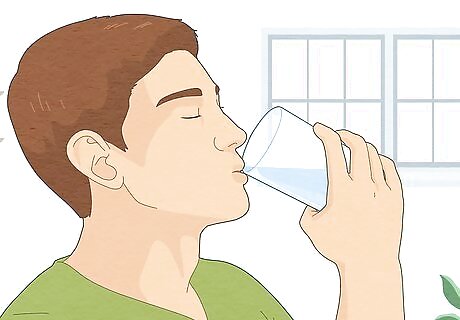
Sip clear, cold fluids throughout the day. Hydration is vital during fits of nausea. Drinking water, broth, and watered-down juice can help keep you hydrated. Water is your best option, but fruit juices like apple juice can work, as well. Flat soda, especially flat ginger ale, can help settle a nauseous stomach. If you have vomited, drink a sports drink that contains glucose, salt, and potassium to replace any of the minerals you could have lost. Avoid beverages that contain caffeine and alcohol.
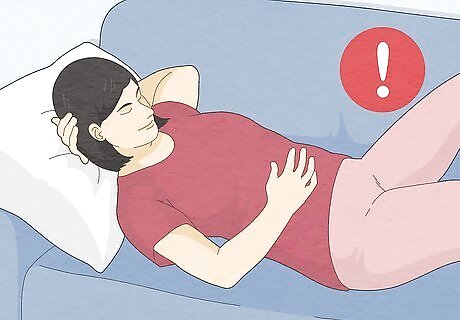
Don’t lie down right after eating. Laying down after a meal can slow down your digestion and lead to a stomachache, on top of your nausea. Sit propped up a bit, especially after you’ve had a snack. Avoid brushing your teeth right after eating, too, as that could make your nausea worse or cause you to vomit.
Natural Remedies
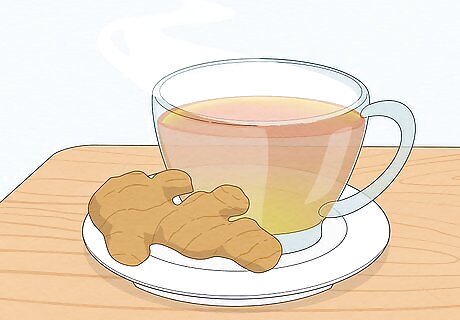
Eat ginger. Ginger tea, raw ginger, and candied ginger can all be used to help reduce a bout of nausea. Ginger encourages digestion and can help you feel better. Make ginger tea with about a piece of fresh ginger root. Trim off the knots, wash the ginger root, and peel it. Slice it into small pieces, and put a few pieces in a mug. Pour boiling water over the ginger and cover the mug to let it steep for 10 minutes. Try ginger snaps, ginger ale, crystallized ginger, or other foods or drinks made with real ginger, too.
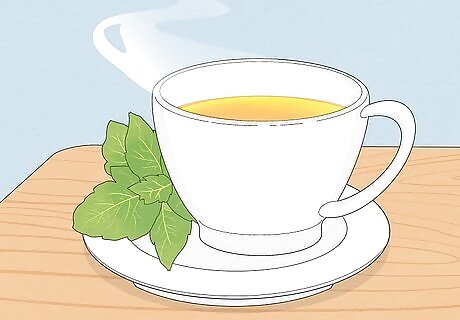
Use peppermint. Peppermint tea and hard peppermint candy have nausea-relieving properties similar to those of ginger. Try putting 2-3 drops of food-safe peppermint oil in 20 mL (0.68 oz) of water. The scent of peppermint is also very effective at reducing nausea, so try aromatherapy as an alternative.
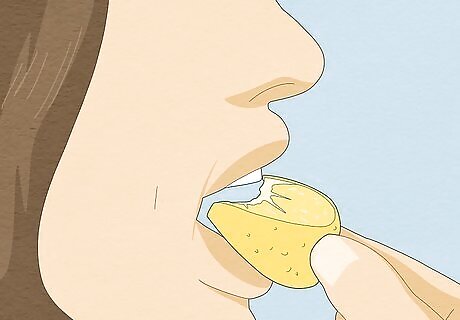
Suck on a lemon. Sour flavors can help reduce nausea. Try a fresh or frozen lemon, lime, orange or even a citrus-flavored hard candy. Alternatively, try cutting a lemon in half and placing it close enough to smell without it becoming overwhelming.
Medications and Medical Treatment
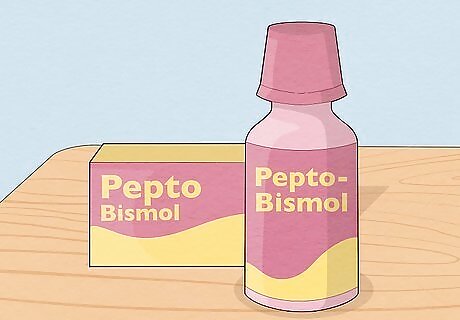
Use an over-the-counter medicine. If you can make a quick trip to your local convenience store or supermarket, pick up a non-prescription treatment labeled for use against nausea. Bismuth subsalicylate is a popular over-the-counter drug used to treat many forms of digestive upset, including nausea. Relief should be almost instantaneous after you take it. Generic "anti-nausea liquid" can be found at many drug stores and supermarkets. These medications are usually little more than a combination of dextrose, fructose, and phosphoric acid.
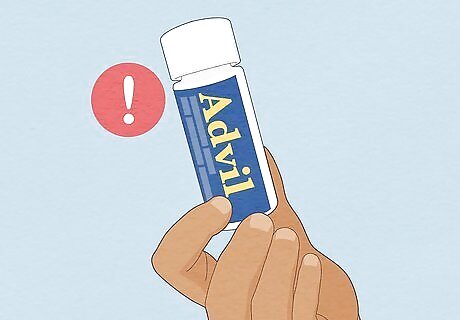
Stay away from nausea-inducing medications. Many medications can trigger and worsen nausea, including antibiotics, antidepressants, and painkillers such as Advil, Motrin, and Aleve. A quick, simple way to determine if a medication could worsen your nausea would be to check its common side effects. If “nausea” is listed as a possible side effect, that medication could be a possible cause of your nausea.
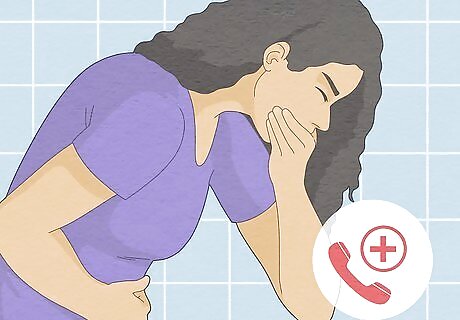
Get medical attention right away if you throw up 3 or more times in 1 day. Additionally, get medical attention if you cannot keep any food or water down, or are nauseous for more than 48 hours. Seek medical attention if you feel weak, have a fever, have stomach pain, or cannot urinate for 8 hours or more. If there is blood in your vomit, bright red or coffee grounds in appearance and if you have a severe headache or a stiff neck or severe abdominal pain, go see a doctor.
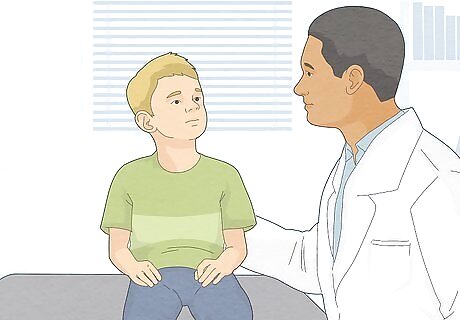
Take your child to a doctor if their vomiting lasts more than a day. Additionally, seek medical treatment for your child if they have diarrhea in addition to vomiting, are dehydrated, haven’t urinated for 6 hours, or have a fever higher than 102 °F (39 °C).
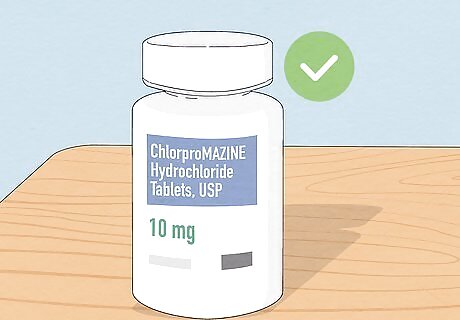
Ask your doctor for an anti-nausea medication. There are several prescription medications that work to reduce nausea. Most begin working within 30 to 60 minutes. Common types of antiemetic agents (aka anti-nausea medications) include: Promethazine (Phenergan) Chlorpromazine (Thorazine) Prochlorperazine (Compazine) Trimethobenzamide (Tigan) Metoclopramide (Reglan) Scopolamine (Transderm scop) Dimenhydrinate (Dramamine)




















Comments
0 comment